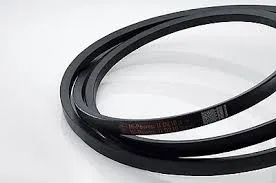- Arabic
- French
- Russian
- Spanish
- Portuguese
- Turkish
- Armenian
- English
- Albanian
- Amharic
- Azerbaijani
- Basque
- Belarusian
- Bengali
- Bosnian
- Bulgarian
- Catalan
- Cebuano
- Corsican
- Croatian
- Czech
- Danish
- Dutch
- Afrikaans
- Esperanto
- Estonian
- Finnish
- Frisian
- Galician
- Georgian
- German
- Greek
- Gujarati
- Haitian Creole
- hausa
- hawaiian
- Hebrew
- Hindi
- Miao
- Hungarian
- Icelandic
- igbo
- Indonesian
- irish
- Italian
- Japanese
- Javanese
- Kannada
- kazakh
- Khmer
- Rwandese
- Korean
- Kurdish
- Kyrgyz
- Lao
- Latin
- Latvian
- Lithuanian
- Luxembourgish
- Macedonian
- Malgashi
- Malay
- Malayalam
- Maltese
- Maori
- Marathi
- Mongolian
- Myanmar
- Nepali
- Norwegian
- Norwegian
- Occitan
- Pashto
- Persian
- Polish
- Punjabi
- Romanian
- Samoan
- Scottish Gaelic
- Serbian
- Sesotho
- Shona
- Sindhi
- Sinhala
- Slovak
- Slovenian
- Somali
- Sundanese
- Swahili
- Swedish
- Tagalog
- Tajik
- Tamil
- Tatar
- Telugu
- Thai
- Turkmen
- Ukrainian
- Urdu
- Uighur
- Uzbek
- Vietnamese
- Welsh
- Bantu
- Yiddish
- Yoruba
- Zulu
Oct . 19, 2024 05:13 Back to list
flat belt material
Flat belt materials play a crucial role in various industrial applications, serving as vital components in conveyor systems, power transmission, and machinery operation. These belts are widely recognized for their simplicity and efficiency, making them a popular choice for numerous industries, including manufacturing, agriculture, and transportation.
The primary function of a flat belt is to transmit power and motion between two rotating shafts. This is accomplished through friction between the belt and the pulleys. The design of flat belts allows for easy installation and maintenance, which is an essential consideration in industrial settings where downtime can be costly. Various materials are used in the construction of flat belts, each offering unique properties that cater to specific applications.
Common materials used for flat belts include rubber, polyester, nylon, and leather. Rubber belts are known for their excellent grip, flexibility, and durability, making them suitable for a wide range of applications, from handling heavy loads to transporting materials on production lines. Polyester and nylon belts are lightweight yet strong, providing good tensile strength and resistance to abrasion. These materials are often chosen for environments where flexibility and resistance to wear are critical. Leather, though less common today, is still valued in certain applications for its strength and natural properties.
flat belt material

The choice of flat belt material depends on several factors, including the load requirements, environmental conditions, and the specific application. For example, in high-temperature environments, synthetic materials designed to withstand extreme heat may be necessary, while in wet conditions, materials with water-resistant properties will be preferred.
Furthermore, advancements in technology have led to the development of specialized flat belt materials that enhance performance
. Manufacturers now offer belts with coatings or additives that improve durability, reduce friction, or provide resistance to chemicals and oils, thus expanding their usability across different industries.In conclusion, flat belt materials are fundamental to the efficiency of many industrial processes. Selecting the right material is essential for optimizing performance, ensuring longevity, and minimizing maintenance costs. As industries continue to evolve, the demand for innovative and high-performing flat belt materials will only grow, driving further research and development in this critical area of engineering.
-
Korean Auto Parts Timing Belt 24312-37500 For Hyundai/Kia
NewsMar.07,2025
-
7PK2300 90916-T2024 RIBBED BELT POLY V BELT PK BELT
NewsMar.07,2025
-
Chinese Auto Belt Factory 310-2M-22 For BMW/Mercedes-Benz
NewsMar.07,2025
-
Chinese Auto Belt Factory 310-2M-22 For BMW/Mercedes-Benz
NewsMar.07,2025
-
90916-02660 PK Belt 6PK1680 For Toyota
NewsMar.07,2025
-
drive belt serpentine belt
NewsMar.07,2025

